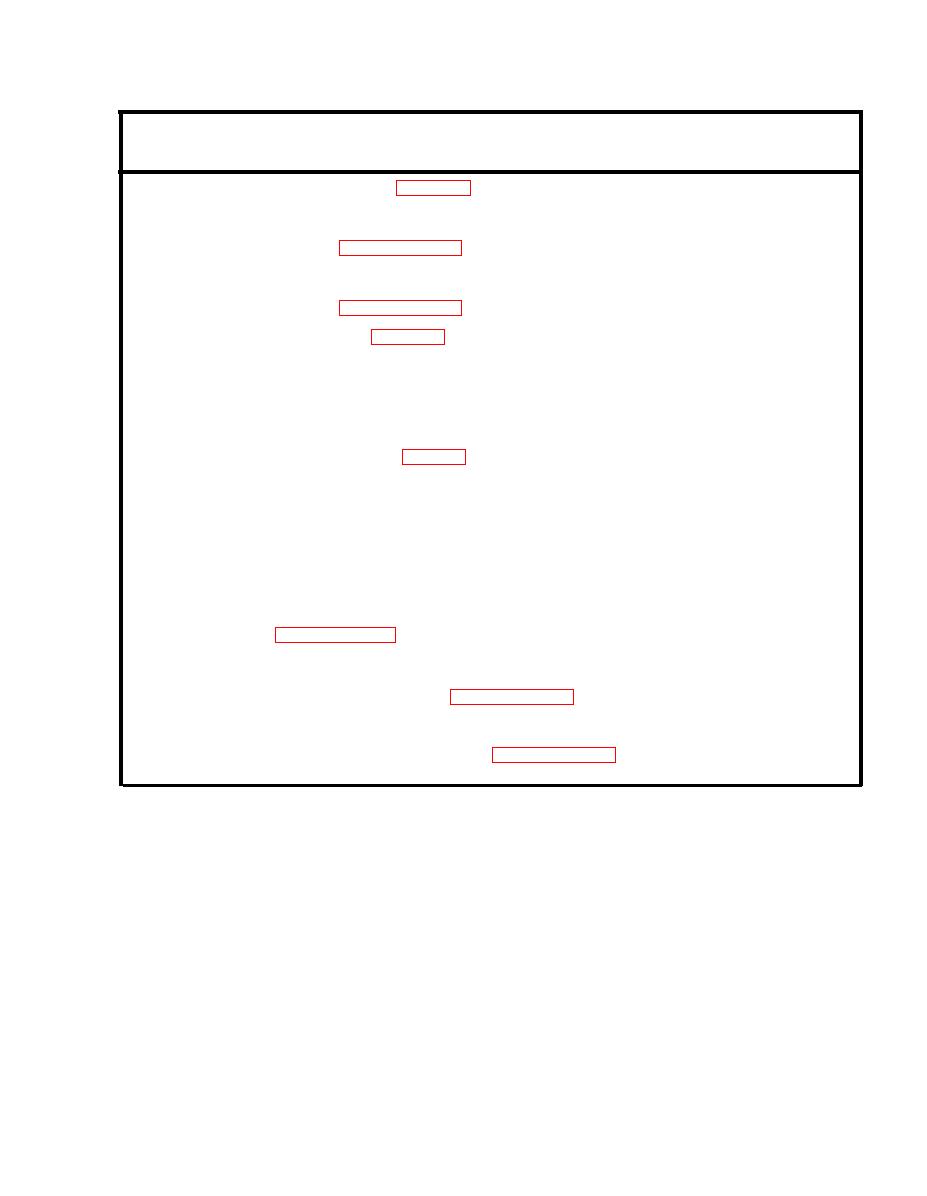 |
|||
|
|
|||
|
|
|||
| ||||||||||
|
|
 TM 5-4120-369-14
Troubleshooting - Continued.
Table 5-1.
MALFUNCTION
TEST OR INSPECTION
CORRECTIVE ACTION
8. HIGH SUCTION PRESSURE (See Table 6-1)
Check for indications of defective thermal expansion valve.
Step 1.
Replace valve (paragraph 5-28).
Step 2.
Check for indications of defective quench valve.
Replace valve (paragraph 5-29).
9. HIGH HEAD PRESSURE (See Table 6-1)
Step 1.
Check to see if condenser coil is dirty.
Clean Coil.
Step 2.
Check for indications of refrigerant overcharge icing of components.
Discharge refrigerant (fig. 6-1) while observing head pressure and sight glass.
Step 3.
Inspect or test condenser fan motor for defective operation.
Repair motor (paragraph 6-8).
Step 4.
Inspect condenser louvers and actuating mechanism for correct adjustment
and proper operation.
Adjust and clean as necessary.
Replace inoperative cmnponents
Step 5.
Check for indications of defective quench valve.
Replace defective valve (paragraph 5-29).
Step 6.
Check to see if the compressor is defective.
Replace defective compressor (paragraph 5-16).
DIRECT SUPPORT MAINTENANCE INSTRUCTIONS
Section III.
5-5.
GENERAL.
This section contains general servicing instructions that otherwise would have to be repeated
several times in this manual.
TESTING FOR LEAKS .
The air conditioner can be tested for refrigerant leaks by the use of an electronic leak
detector, by the halide teat or by the soap bubble method. The preferred method is use of
the electronic leak detector. If sufficient pressure is not present in the system to accomplish
an adequate leak test, add dry nitrogen at the receiver charging valve to increase the system
pressure to 200 psig, then conduct the leak test. If the system is totally discharged, to con-
serve leak test refrigerant, pressurise the system with R-22 to 72 psig, isolate the compressor
by front-seating the service valves (1 and 2, figure 3-2). At the receiver charging valve
pressurize the system with dry nitrogen to 300 psig, them conduct the leak test.
|
|
Privacy Statement - Press Release - Copyright Information. - Contact Us |